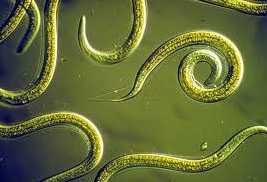- Home
- Editorial
- News
- Practice Guidelines
- Anesthesiology Guidelines
- Cancer Guidelines
- Cardiac Sciences Guidelines
- Critical Care Guidelines
- Dentistry Guidelines
- Dermatology Guidelines
- Diabetes and Endo Guidelines
- Diagnostics Guidelines
- ENT Guidelines
- Featured Practice Guidelines
- Gastroenterology Guidelines
- Geriatrics Guidelines
- Medicine Guidelines
- Nephrology Guidelines
- Neurosciences Guidelines
- Obs and Gynae Guidelines
- Ophthalmology Guidelines
- Orthopaedics Guidelines
- Paediatrics Guidelines
- Psychiatry Guidelines
- Pulmonology Guidelines
- Radiology Guidelines
- Surgery Guidelines
- Urology Guidelines
Doctors remove 14 roundworms from woman's bile duct

In a rare case, doctors at a private hospital here removed 14 live roundworms, measuring 15-20cm each, from a 38-year-old woman's bile duct, the medical centre said today.
The worms were removed endoscopically without surgery at the Fortis Hospital, Shalimar Bagh, it said in a statement.
The patient had been suffering from severe abdominal pain, fever, nausea and intermittent episodes of jaundice for the last six months and was advised to undergo an abdominal CT scan which revealed the presence of worms in the bile duct, which connects the liver to the intestines.
The patient then underwent an endoscopic procedure which showed multiple live roundworms, each worm measured nearly 15-20cm, said Dr Arvind Khurana, the head of the department of gastroenterology at the hospital.
The worms were removed using snares and forceps.
While it is common to find worms in the intestines, they are rarely found in the bile duct, doctors said.
India has one of the highest numbers of cases related to worms as the de-worming medication is not routinely administered to the people.
"Usually roundworms are found in the intestines. Occasionally they can migrate to the bile duct causing pain, fever and jaundice. There have been cases where we have seen two or three roundworms in the bile duct," he said.
"However, to see 14 worms is extremely rare," Dr Khurana added.
The patient had sought another opinion in a different hospital which had wrongly diagnosed the condition and prescribed antibiotics to ease the pain.
"Once properly diagnosed, we managed to remove all the roundworms endoscopically in a single session. Immediately after the removal, the patient was pain-free," he said.
Endoscopy is performed with a flexible tube which is inserted into the body non-surgically.
"I was suffering from abdominal pain for the last six months. Every time I visited a doctor, I was prescribed antibiotics but nothing helped. With time I could not digest any food and vomited at least three to four times in a week. I suffered from jaundice as well," the patient said.
A month ago, when the pain started to worsen and she found it difficult to eat, she consulted the doctors at Fortis.
"They were able to diagnose my condition. The procedure was done recently, and after that, I was completely pain-free. I am recovering and feeling much better now," the patient said.
Roundworms infect the human gut, where they feed and reproduce. Its life cycle begins when eggs from adult worms living in the intestine are passed out with faeces.
This leads to the contamination of the soil. These infections are mostly seen in rural areas with poor sanitation and where contaminated soil is used as a fertiliser for fruits and vegetables, experts said.

Disclaimer: This site is primarily intended for healthcare professionals. Any content/information on this website does not replace the advice of medical and/or health professionals and should not be construed as medical/diagnostic advice/endorsement or prescription. Use of this site is subject to our terms of use, privacy policy, advertisement policy. © 2020 Minerva Medical Treatment Pvt Ltd